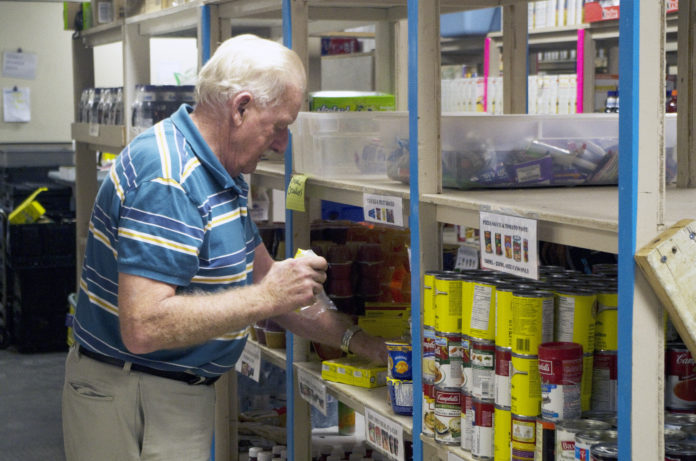
The Prince Albert Food Bank is doing fine for now but is bracing for as much as a 50 per cent increase in demand in the coming weeks.
“We’re expecting to get a lot busier once the full impact of all of the layoffs kicks in,” said executive director Kim Scruby.
He said finding volunteers is tough because most people are self-isolating at home, but that the support from the community is strong.
“We’re getting the job done,” he said.
“(The community) is doing their best. As usual, pasta and that sort of thing would be nice to have.”
He said grocery store donation bins work well for people hesitant to go out to the food bank to donate in person.
The Prince Albert food bank isn’t the only one bracing for a surge in demand as laid-off workers turn to them for help.
Food Banks Canada said they are already seeing drastic declines in the number of volunteers available and concerns about the amount of stock, as well as financial support.
The organization works to bring additional resources to food bank networks, support the sharing as ideas and sharing of best practices.
They put out a special $150 million appeal to ensure food banks can continue their work.
On Friday, they got a $50-million boost from the federal government.
During his daily briefing, Prime Minister Justin Trudeau announced $100 million in supports to groups helping to feed Canadians facing social, economic and health impacts of the pandemic.
Funding will be directed to national, regional and local food organizations to help those facing food insecurity. Beneficiaries include Food Banks Canada, the Salvation Army, Second Harvest, Community Food Centres Canada and Breakfast Club of Canada.
The funding will include supports for Indigenous peoples and northern communities.
“This funding will be used to purchase food and other basic necessities. It will help these organizations find new, creative ways to reach people in need, so they can continue to carry out their important work while respecting physical distancing guidelines,” the federal government said in a news release.
“They will be able to use the funding to buy or rent equipment and other materials to help address the unique needs of the communities they serve and the health-related challenges presented by COVID-19. By supporting Canada’s food banks and local food organizations, we are making sure vulnerable Canadians can get the food they need, when they need it most.”
Of the funding, $50 million will flow to Food Banks Canada, $20 million split evenly between Salvation Army, Second Harvest, Community Food Centres Canada and Breakfast Club of Canada and $30 million for local-level organizations who serve people experiencing food insecurity.
Funding will be delivered through the Local Food Infrastructure Fund.
Eligible activities for the funding include the purchase of food, support for the transportation and distribution of food, hiring temporary help to fill volunteer shortages and activities to implement biosecurity measures such as the purchase of personal protective equipment to reduce the spread of COVID-19.
In a press release, Food Banks Canada welcomed the news.
“Today’s announcement from the federal government is welcomed with a sigh of relief from Food Banks Canada and the over 3,000 food banks and community agencies that come together to serve our most vulnerable neighbours,” they wrote.
“ This funding will allow food banks to continue to purchase food and other necessities. It will also help find new ways of reaching people in need, so we can continue to serve those living with food insecurity while addressing the health-related challenges presented by COVID-19.”

